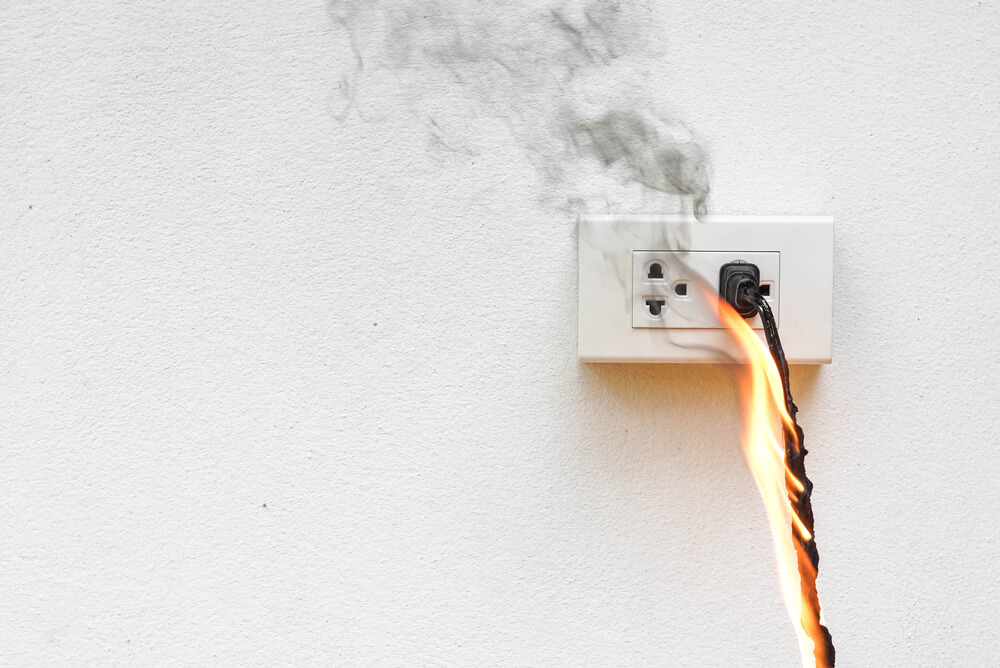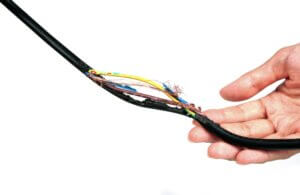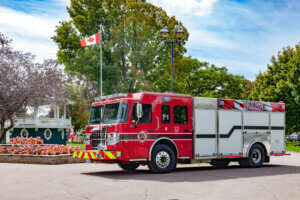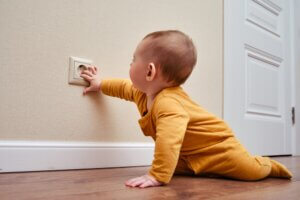You don’t need to be an expert electrician to keep your home safe from electrical hazards. Learning how to spot a potential electrical hazard is the best way to prevent an accident or major fire from happening in your home. Read through this list to find out the most common electrical hazards you probably don’t know about and how to prevent them.
1. Old or Outdated Wiring
Old or outdated wiring can pose a number of risks, including an increased chance of an electrical fire, power surges, and other serious issues. This is why it is so important that you do not try to DIY electrical work. One way to ensure that your wiring is up to date and safe is to have it inspected by a licensed electrician every few years. If the wiring in your home is over 30 years old, you should have it inspected annually.
If the wiring in your home is damaged, cracked or worn out, this can increase the chance of electrical related accidents. Some hazards to look out for include:
- Overheated wires and cords
- Frayed appliance or extension cords
- Damaged electrical appliances
- Pinched or pierced cords caused by heavy objects on top
- Cracked wire insulation caused by heat, age or bending
- Wires chewed by rodents
You should call an electrician immediately if you notice the lights in your home tend to dim or flicker for no reason. Other signs of poor wiring include your breakers repeatedly tripping or if your outlets feel warm or let out big sparks. These are signs you probably need to repair the wiring throughout your home.
2. Outlets and Appliances Close to Water
This should go without saying, but electricity and water do not mix. Water conducts electricity, so by keeping your outlets away from water, you are greatly reducing the risk of a shock. This is why outlets in bathrooms, kitchens, laundry rooms and other rooms with water sources should be installed a good distance away from the source of water.
You should never use any electrical device near a source of water. This means blow drying your hair while in the bathtub, or bringing a radio into the pool. As a general rule, keep this in mind: if it needs to be plugged in, it shouldn’t go near water. Even having wet hands and operating a plugged-in appliance can run the risk of a shock.
To reduce the risk of shocks, always unplug appliances when you’re not using them. If a plugged-in appliance accidentally does get wet, be sure not to unplug it. Instead, go to your electrical panel box and turn off the power source that the appliance is plugged into. Only then is it safe to unplug the appliance. If you’re concerned about the safety of the appliance, have a qualified electrician or appliance repair specialist take a look.
3. Using Water on Electrical Fires
Our natural human instinct is to pour water on fire when we see it. While this is fine for many types of fires, it’s something you should never do to put out an electrical fire. Pouring water on an electrical fire will further fuel the flames and could result in electrocution. If an electrical fire happens in your home, use a fire extinguisher. If you do not have one, turn off your power and evacuate your home. Call the fire department and have the professionals take on the fire.
4. Curious Children
Young children are curious about the world around them. An exposed outlet can cause serious harm to a child who may stick their fingers or a toy into it. Prevention is key to avoid any kind of accident.
You have a couple of options to protect your children from electrical outlets. The easiest fix is to add plastic closures or covers to any unused outlets within their reach. You can also have your outlets replaced with extra-safe powerpoints. They will replace your normal powerpoints and help to prevent objects and fingers from going into an outlet. If you’re looking for a more permanent solution, you can install child safety wall plates. These plates have built-in outlet covers that automatically snap shut place when the outlet is not in use.
5. Misuse of Extension Cords and Power Bars
Extension cords and power bars make it easier for us to use our electronics and appliances, but they also come with their own safety concerns. Make sure that when using an extension cord that it is not in the way of where people walk and that it cannot be tripped on. Never put an extension cord under a carpet or rug or anything else that could cause it to heat up too much. It’s also important that you use the right extension cord for the job. If you’re running a cord outside, be sure to use one designed to withstand the outdoors.
When it comes to power bars, make sure you are not overloading and plugging too many things in at once. Doing so can cause many issues including sparks, shocks, electrical fires and ruining the items plugged into the power bar. Do not plug a power bar into the outlet of another power bar. Plugging two power bars together can result in an overload.
Before you plug anything into an extension cord or power bar, ensure it is in good working condition. If you find you’re constantly using an extension cord or power bar in the same area of your home, consider having additional electrical outlets installed by an electrician.
6. Lightbulbs
You’ve probably never considered lightbulbs to be dangerous, but they too have the potential for shocks or an electrical fire. The potential for hazards increases when lightbulbs are kept near flammable materials such as beds, drapes, plastics, and upholstery.
You should always turn off a light before replacing the bulb. Never attempt to replace a bulb with wet hands as this could result in a shock or worse. When replacing bulbs, make sure they are the correct wattage for the lamp. If you’re concerned, it’s always safer to go a little lower with the wattage than higher. If you need a brighter light, buy a new lamp that can handle a higher wattage.
Below are the average costs of Electricians services across different cities in Canada:
| City | Average | Minimum | Maximum |
| Barrie | $2,995 | $100 | $27,200 |
| Calgary | $1,872 | $100 | $50,000 |
| Edmonton | $2,124 | $100 | $40,000 |
| Hamilton | $3,259 | $100 | $34,000 |
| Oshawa | $2,116 | $100 | $50,000 |
| Ottawa | $2,046 | $100 | $50,000 |
| Toronto | $2,968 | $100 | $50,000 |
| Vancouver | $2,742 | $100 | $50,000 |
*Costs based on 12850 verified Canadian homeowner reviews as of March 2022
Now that you know the many common electrical hazards that can exist in a home, it’s time to take some preventative steps. If you haven’t had your wiring and electrical looked at in some time, take the time now to book an appointment with an electrician to assess your situation. Ideally, your home should be checked every 2 to 3 years, but if you can’t remember the last time this was done, it’s better to be safe than sorry.
Article Updated June 2022.




